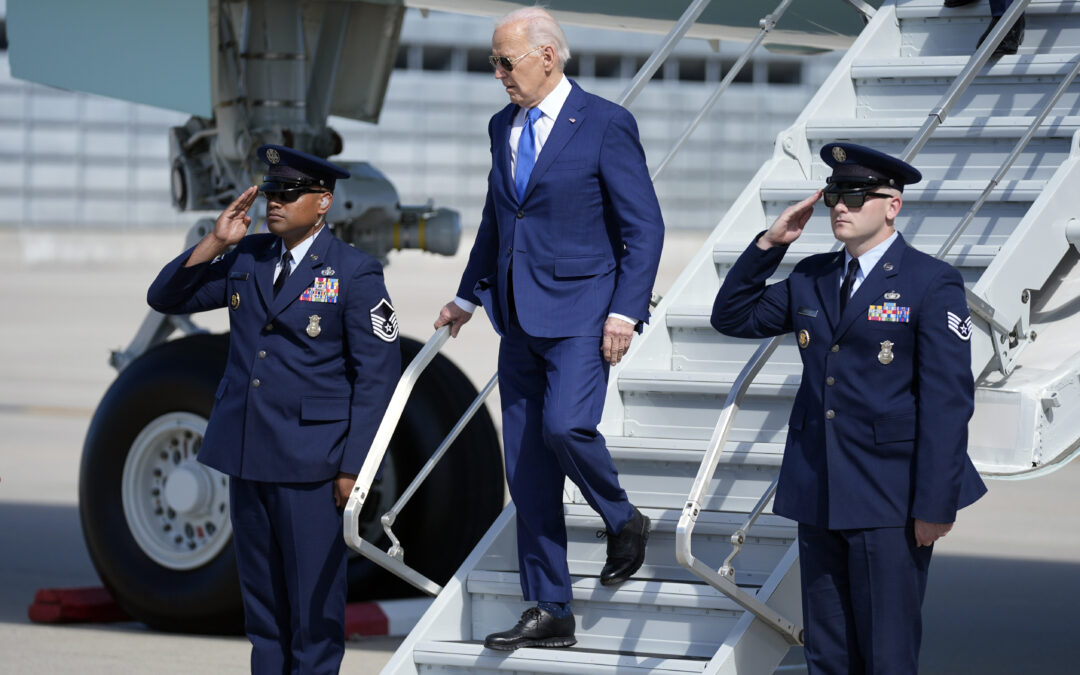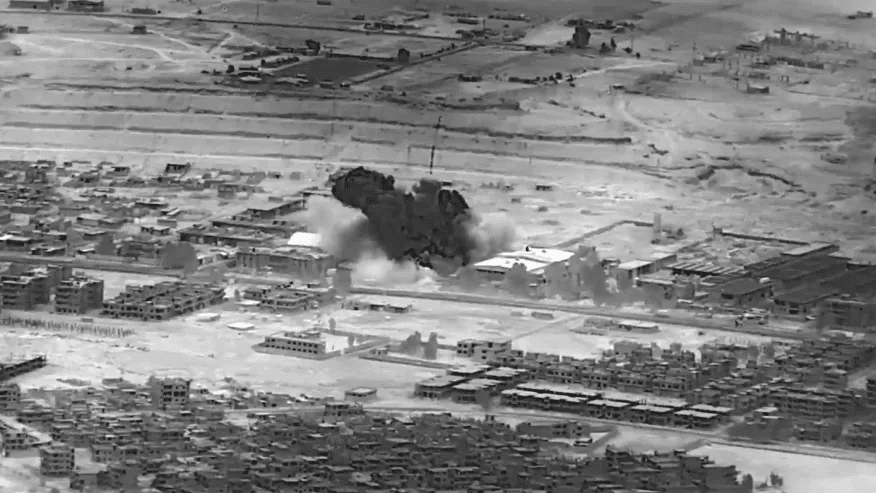By ZEKE MILLER and AAMER MADHANI Associated Press WASHINGTON (AP) — President Joe Biden said Wednesday that he would not supply offensive...

Global News Through a Greek Lens
Global News Through a Greek Lens


As attacks on U.S. troops and assets continue to stack up in the Middle East, Washington has turned to targeted retaliatory strikes on assets belonging to Iran and its proxies.
The tit-for-tat comes as regional tensions flare over the Israel-Hamas war. Unless an attack causes multiple American casualties or serious damage to U.S. assets, experts don’t expect to see the Biden administration changing its posture in any major way.
But the exchange of fire has already injured dozens of U.S. troops and adds to the dangerous landscape facing the Biden administration in the Middle East.
And the assaults are not expected to let up.
“I’m sure there is a hope that [the U.S. strikes] would have a deterrent effect but clearly they have not,” said Jonathan Lord, the director of the Middle East Security Program at the Center for a New American Security. “I don’t suspect that they would because these groups that are conducting these strikes are trying to go the U.S. into a larger conflict. That is their purpose in targeting the U.S. forces at this point.”
U.S. troops based in Iraq and Syria have been attacked at least 48 times since Oct. 17, after the breakout of a war between Israel and Palestinian militant group Hamas.
The assaults are evenly split among the two countries – 24 attacks in Iraq and 24 in Syria – with all involving explosive drones and rockets, a defense official confirmed to The Hill Sunday.
At least 56 troops have been injured in the attacks, including 10 since the start of this week. Most are minor injuries, with every service member since returning to duty.
Assaults have also been aimed at U.S. assets outside Iraq and Syria, with an American MQ-9 Reaper surveillance drone shot down off the coast of Yemen on Wednesday by the Iranian-backed Houthis.
In addition, a U.S. Navy destroyer had to shoot down 15 drones and four cruise missiles fired off the coast of Yemen by Houthi rebels last month.
To combat this, President Biden since late last month has authorized three strikes on facilities the Pentagon says are used by Iran and the militant groups it backs, with two carried out on Oct. 26 and the latest on Wednesday.
But the so-called “self-defense airstrikes” have not appeared to deter the militant groups, with American troops targeted at least six times by fighters in Iraq and Syria since the last U.S. hit.
Meanwhile, the threat of a more dire strike looms over the region.
Militant groups have already come close to inflicting major damage on U.S. forces. In an early morning Oct. 26 incident, a drone launched at the Erbil air base in Iraq made it through U.S. air defenses, crashing into a barracks housing American troops, Reuters reported Thursday.
The heavily explosive-laden drone failed to detonate, however, with only one service member suffering a concussion, officials told the outlet.
Lord described the steady uptick of attacks on U.S. troops as “increasing escalation on a dimmer switch,” injecting a bit of uncertainty into American decision-making.
“Historically, the red line that has drawn a U.S. response has been either serious injury or, more often than not, the killing of U.S. forces or personnel,” he said. “Obviously that creates a pretty terrible dilemma for the president because no one wants to sit around and wait for these attacks to ultimately claim another American life before responding.”
Mark Cancian, a senior adviser with the International Security Program at the Center for Security and International Security (CSIS), said that while the United States “clearly doesn’t want to escalate” the situation, the risks of such an outcome remain.
“If there’s a major attack in Iraq or Syria where you have a base overrun, you get a couple of dozen serious casualties, if they fire a missile and it hits a U.S. ship, then I think the United States will get drawn in because it will feel the need to retaliate in kind,” Cancian told The Hill. “A lot of depends on Iran, just how hard they push.”
About 3,400 American troops are based across Iraq and Syria, where they contribute to a mission to prevent the re-emergence of the Islamic State in the region.
Biden so far has taken a cautious approach in responding to attacks on the service members, seeking to prevent a larger U.S. role related to the Israel-Hamas conflict.
The U.S. strikes on the Iranian-linked facilities in Syria, for example, took place late at night when they were mostly unoccupied, a decision made to limit casualties.
Biden also dispatched Secretary of State Antony Blinken to Iraq last week to pressure its top officials to get militias operating there to pull back on attacks.
But those efforts have so far failed to yield the desired results, with the ever-present threat that the next attack could be the one to tip the U.S. into a wider war.
“The fear and concern for broader escalation, whereas the Israel-Hamas conflict then leads to broader regional war, is very real,” Lord said.
The Israel-Hamas war began last month after Hamas gunmen crossed from the small enclave of Gaza into southern Israel on Oct. 7, killing about 1,200 people and taking roughly 240 others hostage.
In response, Israel has launched a ground and air offensive against Hamas in the Gaza Strip, bombing and shelling the coastal territory relentlessly.
More than 11,000 Gaza residents had been killed in the bombings, about 40 percent of them children, with mounting humanitarian problems, according to Palestinian officials.
The conflict has caused upheaval in the region, with Iran and its proxies showing clear displeasure in American support for Israel in its attacks on U.S. troops and assets.
The United States, in turn, has turned to a show of force to discourage further attacks, deploying two aircraft carrier strike groups and a nuclear-powered submarine to the waters around the Middle East.
In addition, it has deployed at least 1,200 troops to the region as well as air defenses, including Patriot batteries and the Terminal High Altitude Area Defense system.
It’s largely unknown, however, how Washington would react to a major attack on U.S. troops, with top U.S. officials so far demurring when asked how the country would respond.
Asked at an Oct. 31 Senate Appropriations Committee hearing whether the deaths of U.S. service members would trigger a direct response against Iran, Austin wouldn’t specify.
“Is it a red line for Iran to orchestrate an attack on our forces that kills an American in Syria or Iraq?” asked Sen. Lindsey Graham (R-S.C.).
Austin only replied that “Iran should be held accountable,” but declined to offer further details.
“I wish you would be more clear, because I’ll tell you this, if one of these soldiers is killed…” Graham said, trailing off.